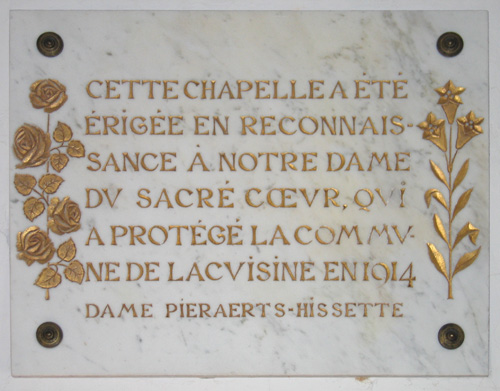Curriculum vitae
On the 30th of August 1888, Philippe Jean Hissette was born in Louvain as the third child of Jeanne Catherine Wouters (1855-1936) and the mining engineer, Louis Hissette (1858-1888). Four months before the birth his father had died at the age of 30.
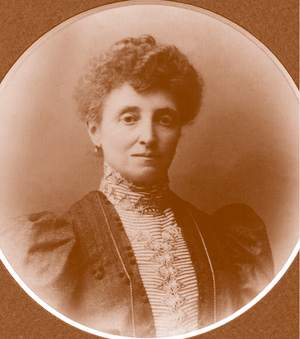
Jeanne Catherine Hissette-Pieraerts,
neé Wouters (1855-1936), mother of Jean Hissette
In 1892 Jeanne Catherine remarried to Joseph Pieraerts in 1892 in Louvain who was a chemistry professor at the University of Louvain. In 1910 Pieraerts had to leave the University because he had literately been thrown out.
From 1894 – 1908 Jean was going to school in Louvain. At the age of 12, Jean as he was called visited the Josephite Boarding School in Melle, Gent (Gand) for a while. He learned to play the violin.
From 1908 until 1909 Jean was recruited for the military service in the Province of Brabant. After that he began to study medicine in Louvain from 1910 until 1914
On the 1st of August 1914, mobilization day, he left Lacuisine where his stepfather and mother had purchased their estate called “La Fresnaye”. He was still a medicine student.
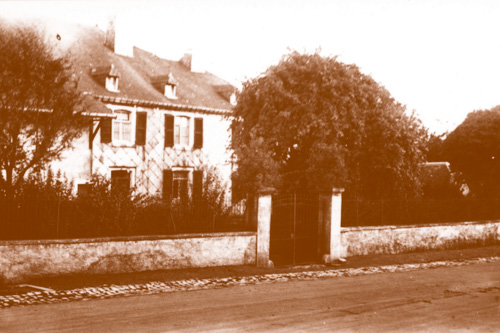
La Fresnaye, Lacuisine/Florenville, Belgium
Jean performed five years of military service as a medically adorned sanitary officer in the medical service unit of the 1st division of the Belgian Army. He was mainly deployed in the front line against the Germans at the Yser.
On the 19th of February 1918 he leaves the Calais hospital (Hôpital de passage, Calais).
On the 30th of January 1919 he leaves the military hospital of Gand.
On the 28th of August 1919 he leaves the military service in Gand (démobilisé par l’ H. M. B. Gand).
During the first world war he wore an identification disc that had been engraved with his name: >1er Division Dr. Hissette - A la Fresnaye par Florenville Belgique<.
In 1919 he passed his state examination at the University of Gent (Gand).
Later the same year 1919 he married the anversoise Hilda de Vriendt (1885-1973), of an old Flemish painter family, in Folkstone, England.In 1920 he settled as a private doctor and obstetrician in the independent practice in Florenville-sur-Semois en Gaume, Rue d’Orval Nr.7. Hissette was not very busy because there were a total of four practising physicians. During this time he also visited the eye clinic of Ghent’s university, which was run by van Duyse, on a regular basis. Soon after, he visited his colleagues and doctor friends, de Mets and Moorkens, in Antwerp to continue his education in ophthalmology. Five children were born in the years between 1920 until 1926.
On the 27th of February 1929, Hilda, Jean and their two youngest children board the ‘Anversville’ in Antwerp. Passing the Matadi Harbour on their way they moved to the Scheutist missionary station (Mission nationale) in Thielen-Saint Jacques in Kasai (Haut-Kasai). The three older children stayed in Belgium for their school education.
September – October 1930: It started with an attentive priest who led him to the discovery of his life time. In September 1930, he discovered the first people in Africa affected by river blindness at the Sankuru and Lomami River in the Belgian Congo.
1932: On his first return visit to Belgium Jean immediately started analysing the discoveries he had made on the river blindness in the Sankuru River Region. After receiving further qualifications and becoming equipped with some privileges from the colonial ministry in Brussels he returns to the Congo without his family as a qualified ophthalmologist.
In October 1932, he travels via Tunis and Egypt into the Sudan and arrives in the Northeast of the Belgian Congo Colony at the end of the year. Here he also discovers a foyer of ocular onchocerciasis at the Uéle.
In the year 1933 he is still in Thielen-Saint Jacques but only for a short time until he leaves the Scheutists to establish a dispensary for eye patients in Elisabethville. His family followed him to Elisabethville/ Lubumbashi in 1934/1935 where the children had the opportunity for an accredited school education.
In July 1934, as an advisor and guide, he attends the Harvard African Expedition under Richard Pearson Strong to research the onchocerciasis along the Sankuru. In 1938 the results were published in a supplement of the American Journal for Tropical Medicine (Strong 1938, Hissette 1938, Bequaert 1938, Sandground 1938). Hissette was confronted by this commission because it was a commission for control, called the Harvard African Expedition.
From 1935 onwards he lives with his family in Elisabethville (Lubumbashi), the capital of Katanga (Shaba), where he works as an eye doctor.
On the 18th of June 1936, Hissette presented a slide show in London and became a Fellow of the Royal Society of Tropical Medicines and Hygiene.
On the 18th of July 1936, he exhibited his aquarelles on the pathology of ocular onchocerciasis at the Colonial exhibition in Brussels (l’Institut royal colonial belge, l’actuelle Académie royale des Sciences d’Outre-mer). Amongst the aquarelles there is one picture of a typical chorioretinitis of the African ocular onchocerciasis, which creates blotchy scars.
In 1937, he investigated the ocular complications of a measles epidemic in the colonial M’Pweto Region at Lake Moéro.
1940: At the beginning of the Second World War Hissette was appointed the position of the provincial doctor in Katanga.
In 1952 he and his wife returned to Belgium after staying in the Congo for 22 years. Around the same time he fell seriously ill and never really recovered from it, making it impossible for him to ever work in the medical field again. In his opinion he had been poisoned during the farewell ceremony in Elisabethville. This had made sense to him since it could have been a temptation to any Bwanga or medicine man to try to harm or kill this great doctor to let the ghost of the doctor pass onto them.
In the first few years the couple stayed in Lacuisine-sur-Semois but soon moved to an apartment in Brussels.
On the 26th of August 1965 Jean died in a hospital at Forest, Brussels.
He and his wife are buried in a family grave in Lacuisine, Florenville.
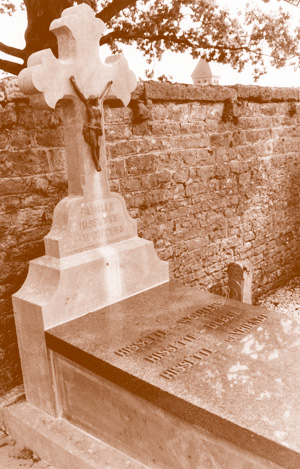
The grave of the family Hissette in Lacuisine-sur-Semois/Florenville
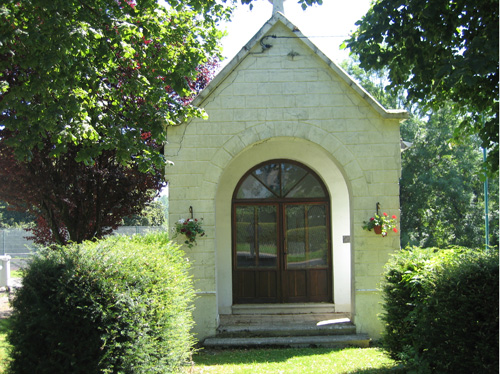
The Lacuisine chapel built on the property “La Fresnaye” in memorial of the events of the First World War (described in the book of “Dr. Jean Hissette’s Research Expeditions to Elucidate River Blindness”, Kaden 2011”).
